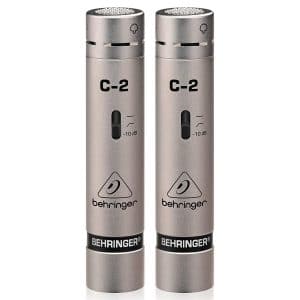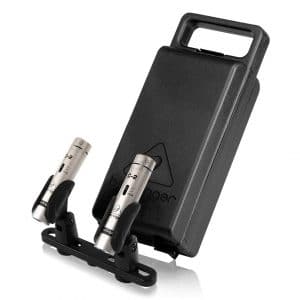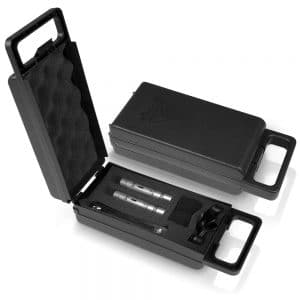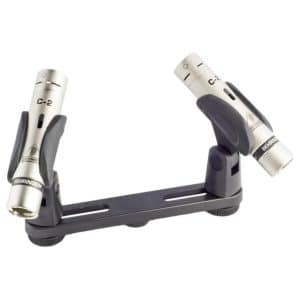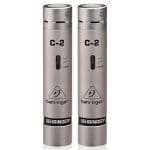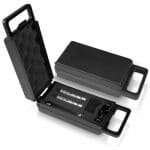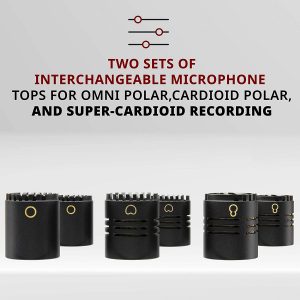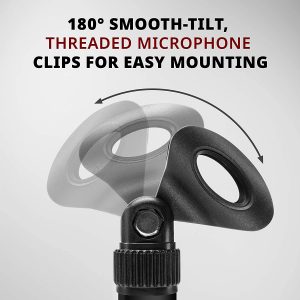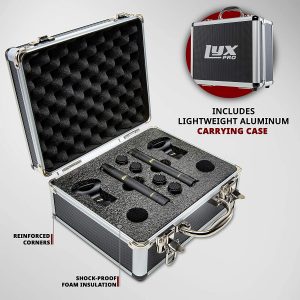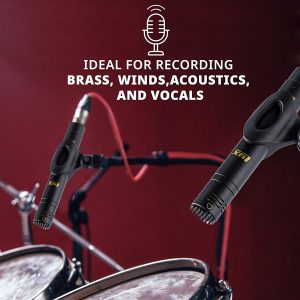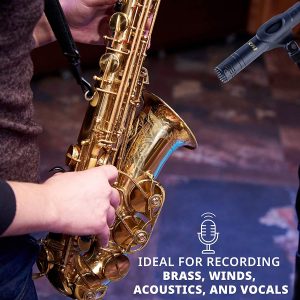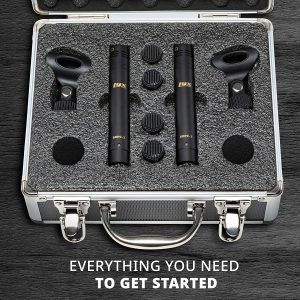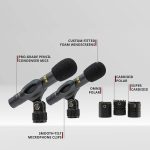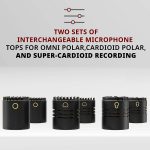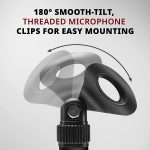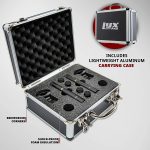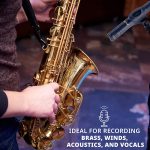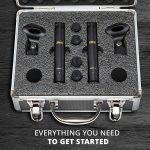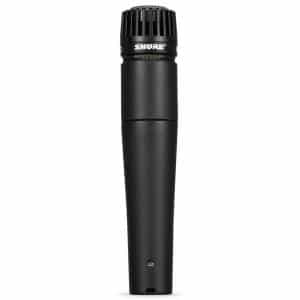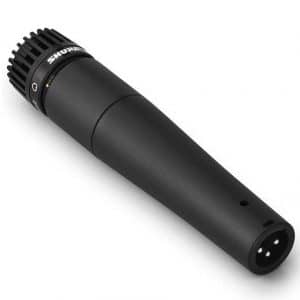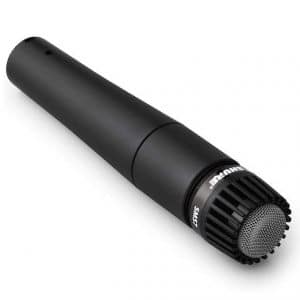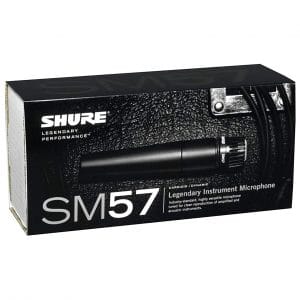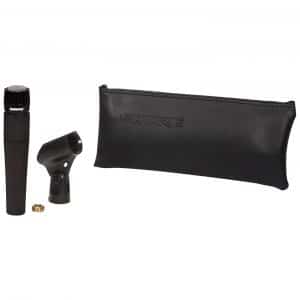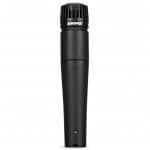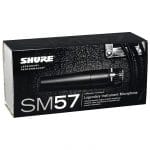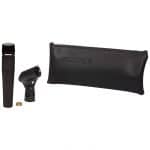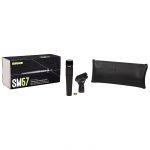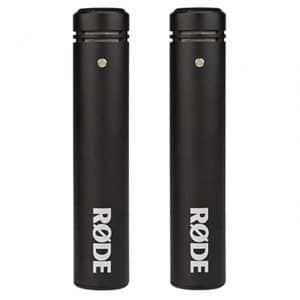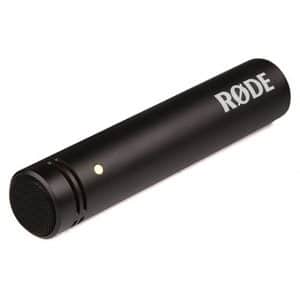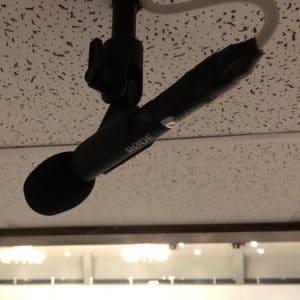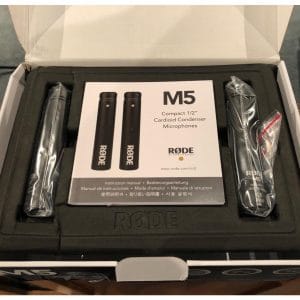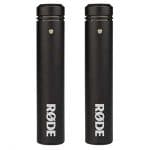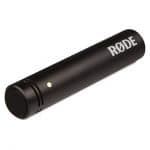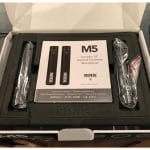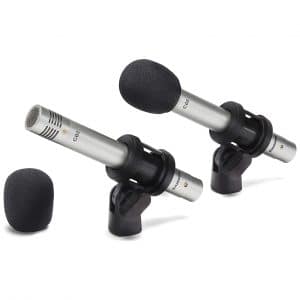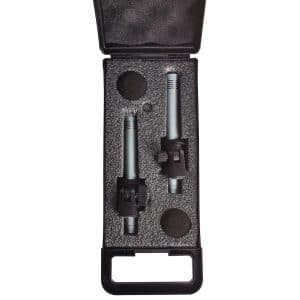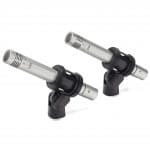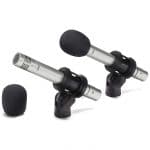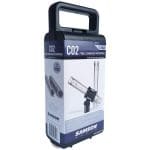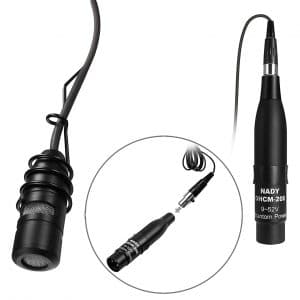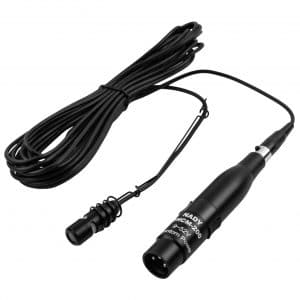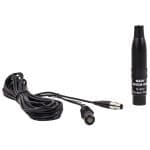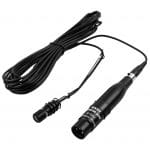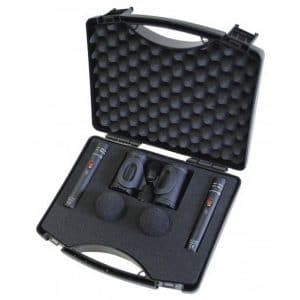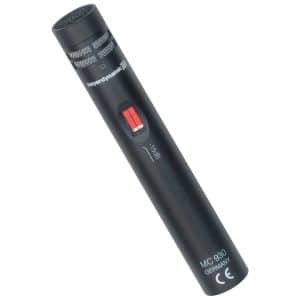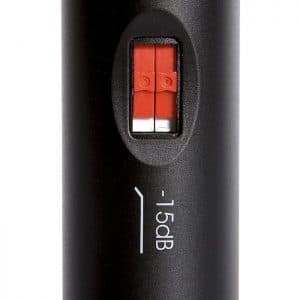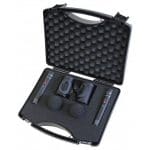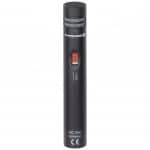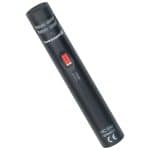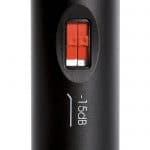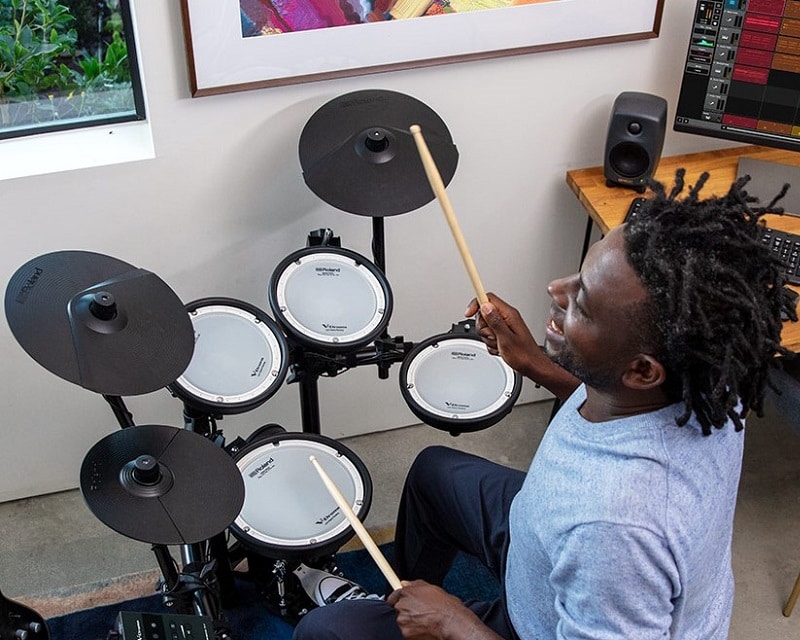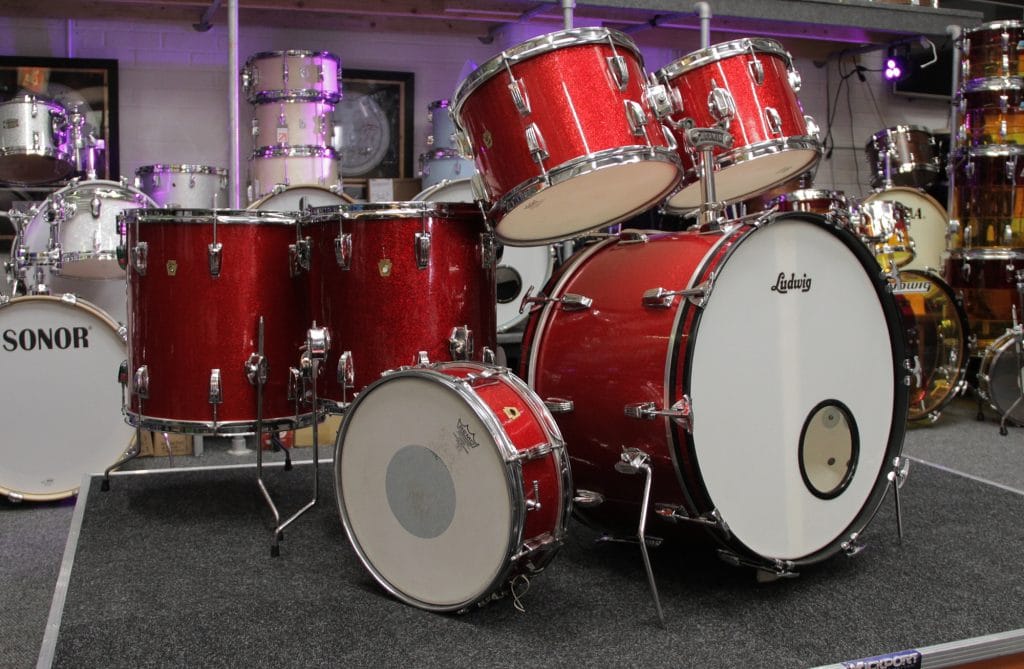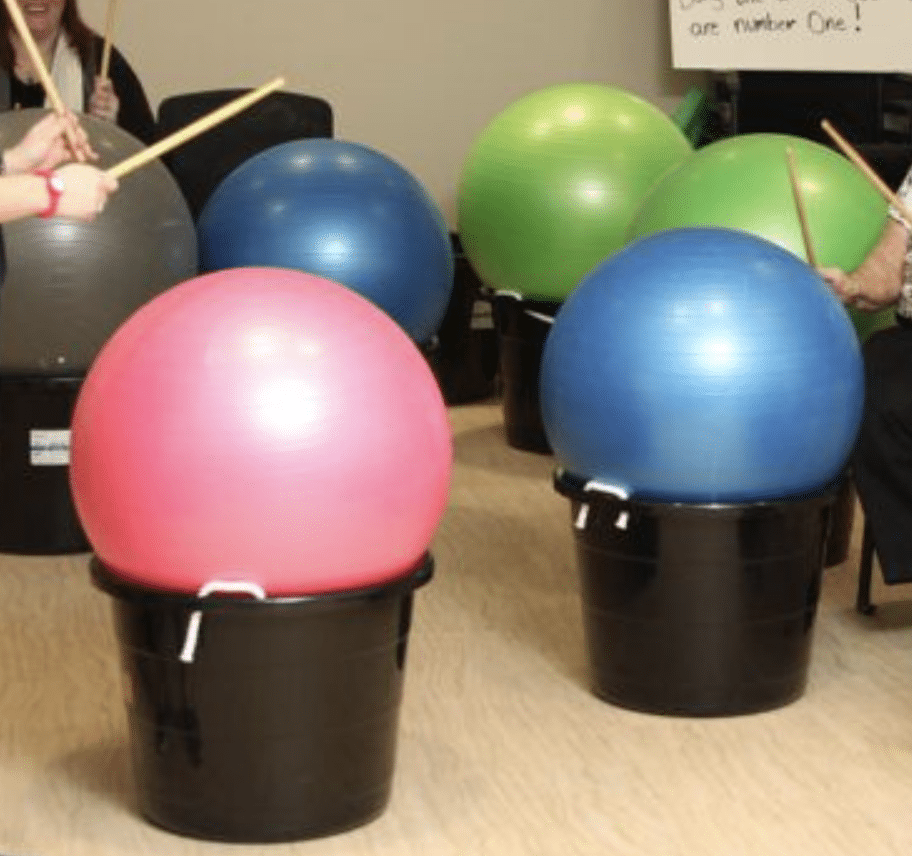What is an overhead drum mic and how does it function?
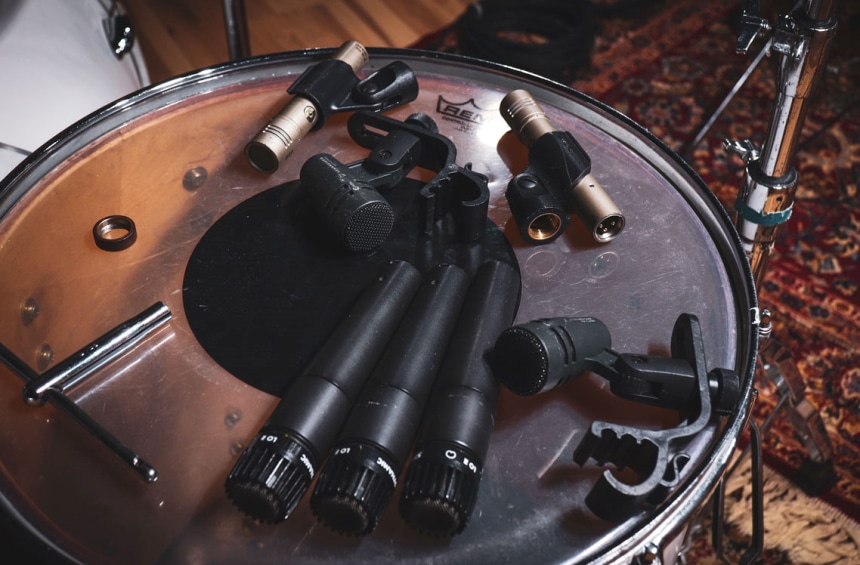
When micing up a drum set, there are many different microphone configurations. Some people record with just three mics, and others use 12 or even more on their microphones in order to get loads of detail to work with. Almost every drum setup needs overhead microphones.
While some drums are recorded with individual mics (the kick, snare, and toms will usually have their own microphone), the overheads are designed to pick up the cymbals and hi-hats, as well as some of the “ambiance” of the kit. By recording from above, these microphones inevitably get a bit of everything when they pick up the hi-hats. For example, some people don’t bother with the tom mics, as toms will shine through on overheads.
Even three mic setups will use at least one drum overhead mic. While other microphones pick out individual drums and details, the overheads do a lot of the “heavy lifting” and record a massive chunk of the sound.
So, in order to do this job, overhead mics need to be either suspended above (like the Nady OHCM-200) or on a mic stand that is high above the drum set. This gives a balanced overview of the kit and allows the microphone to pick up sound from the whole kit rather than just focusing on one area.
Two microphones are usually set up, and these can capture the left and right of the kit in more detail and give a wider stereo field for engineers to play with when it is time to mix the drums.
Features to consider when choosing an overhead drum microphone
What features do you need to think about when you are looking to choose a drum microphone? How have we judged the models on this list? Ensure you have considered the following before taking the plunge and order any drum mics. If you’re looking to do some basic home recordings, you don’t need to spend thousands, but if you want to make a Grammy award-winning album, then you will need to invest.
Type
Microphones come in two main types: condenser and dynamic. They get these names from how they pick up sound and the method used within the capsule to record, but there are some key differences between the two mics. You can buy both condenser and dynamic mics suitable for use as drum overheads, so understanding what both are will help you to prioritize.
Condenser microphones are powered and therefore usually do a slightly better job of picking up detail. In some cases, they do a much better job of picking up detail. So why do some people still opt for dynamic mics?
Dynamic microphones have their pros, too; they don’t require power whereas condenser microphones will require some sort of phantom power from batteries or from the desk. Also, they tend to be a little more rugged in design, if you dropped a dynamic mic, it probably has a better chance of surviving than a condenser.
Both types can be found on our list, so it is truly a matter of personal preference.
Polar pattern
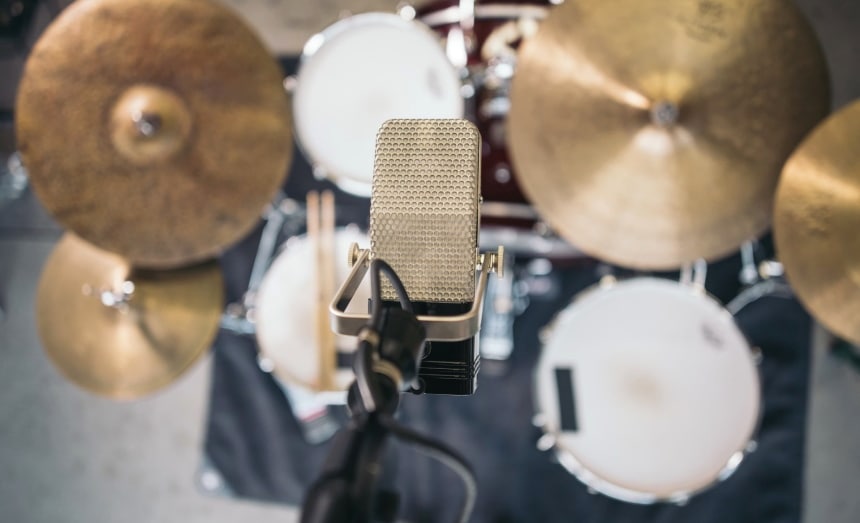
The polar pattern outlines the direction and area from which the mic capsule is designed to pick up sound. Cardioid patterns are common. These reject many of the sounds from behind or the side, and focus on the direction in which the microphone is pointed, meaning you don’t get as much bleed from other instruments.
The LyxPro SDPC-2 has some added options, such as omnidirectional, which can pick up sound from all directions. These can be experimented with to tailor your own unique sound.
Sensitivity
Microphone sensitivity refers to how much of the original sound source the mic pics up and turns into input signal for the desk or other audio input. Dynamic mics tend to have a lower sensitivity, so this means they are good for high-volume recordings and will turn this into a much more stable level of sound, and the mic won’t get “overloaded” easily. A super sensitive microphone might sound like a better thing, but in some cases, mic sensitivity can be too high and lead to all sorts of audio problems. Drums are loud, so you don’t need an overly sensitive mic.
Equivalent noise level
All microphones produce some sort of noise whether or not there is a sound source for them to record. This is referred to as equivalent noise level or just “self-noise”. Around 22-24 dB is pretty standard, and this is quite a low figure. The Samson C02 has a noise level of 22dB. Some mics are a bit higher, and this can be something to look out for.
The lower this noise level, the better in the majority of circumstances. It means more of the end result (your finished recording) will be the sound you want to record rather than the noise of the microphone.
You may be worried about the fact that there is any noise in the recordings to come from a microphone; it is unavoidable, and mics have their own character. There is no problem in having a little noise and at low levels like 22 dB it won’t be noticeable.
Maximum SPL
High volume, and therefore high vibration sounds, can cause a microphone to distort. This is measured in SPL or “sound pressure levels”. The maximum SPL is the maximum level of this pressure a mic can handle. Basically, the higher the better, especially if you are looking to record louder sounds, from loud sources such as drums. Overheads do not have to have insanely high levels, but higher does tend to be better and just give that extra bit of protection to ensure that your mic won’t distort if you do have a loud drummer playing.
Overloading microphones is a sure fire way to ruin recordings, so be sure to avoid this by getting a mic with a high SPL rating.
Frequency response

The range of human hearing is, in theory, 40 Hz to 20 kHz. It tends to degrade a little over time, hearing gets worse as we get older.
Good recordings can use the full range of frequencies, which is often 20-20kHz in quality microphones. Realistically, most frequencies in a drum pattern will not be at the very high or very low end of the frequency range, but it is still a good idea to record these frequencies if you can for a well-rounded sound. The Beyerdynamic MC930 is a great example of a full frequency response.
If you don’t have a full frequency response, some of the sounds can go missing, or you can get a low-quality sound like an old-school telephone.
Impedance
Impedance is AC current resistance. The higher it is, the more likely long cables will cause some degradation of the sound, so the goal is to have a low impedance. The lower the better, generally, but all of the options on this list are 200 or below, which is very good for an overhead microphone.
Think about how long you need the cable to be when you run it to your drum overheads. If you are likely to run long cables, lower impedance will be an even higher priority.
Power requirements
As we’ve already stated in this guide, most microphones on the list need some sort of power going to them. Condenser microphones require power, and if you do not use it then the signal will be almost imperceptibly low. Some more affordable mics like the Samson C02 pair will also need power.
Power sometimes comes from a battery source but in the majority of circumstances it is actually run to the mic through a mixing desk or audio interface using something called phantom power. This is built into many mixers and interfaces as the manufacturers know that the mics will require this extra power in some situations.
The voltage rating will also be noted.
Weight
The weight is not the number one feature to consider when you are thinking about which overhead drum mics to buy but if you need a portable setup you might give it some consideration. Also, the more your mics weigh, the more sturdy the stands might have to be. Luckily, most of the mics themselves are pretty lightweight. Some of the heavier products are rated so because they have cases that add to the bulk.
Warranty
The warranty offered will come down to each manufacturer, as they all have their own policies when it comes to this. Microphones should last a long time if treated right, especially dynamic microphones, so look for products with a one or two year warranty if you can just to make sure you can be confident in your purchase over long periods of time. If a mic is well-made, the risks of it breaking without being damaged deliberately are pretty low, so manufacturers should be happy to provide their customers with a warranty, especially for mics over $100.
Other features
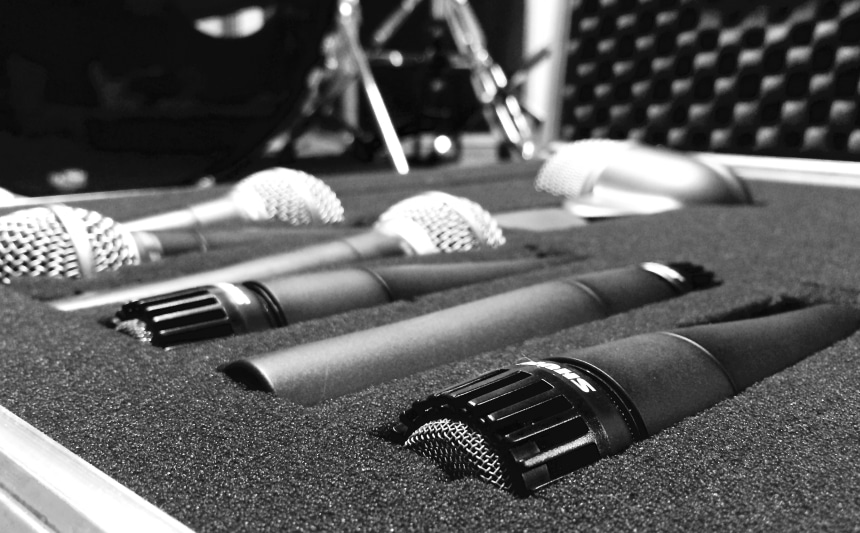
What are some of the other features that can make a microphone stand out as a great buy?
We’ve already briefly mentioned that multiple polar patterns can be included in some mics; switchable capsule patterns for different audio pickup can be a good little feature that makes your microphone a bit more versatile.
Accessories are another great way that mic manufacturers can make an overhead drum microphone stand out from the competition. A lot of these mics come with clips for connecting to mic stands, as this is pretty standard as additions go.
Other mics include accessories such as cases, which can be used for safely storing and transporting, the Beyerdynamic MC930 is a good example of this. This model also comes with windshields, which means that if you are recording outside, you can protect the mics from gusts of wind. This is not likely for drums, but if you use your mics for other purposes, it can be a good added feature.
There are so many microphones on the market that each tries to create a separate, attractive offering with added extras.







